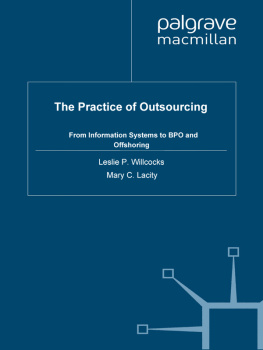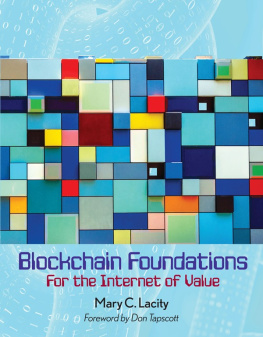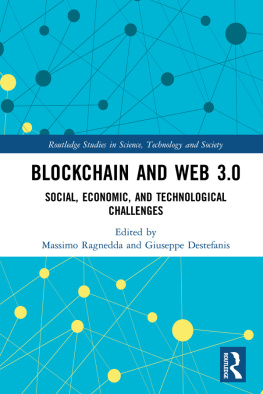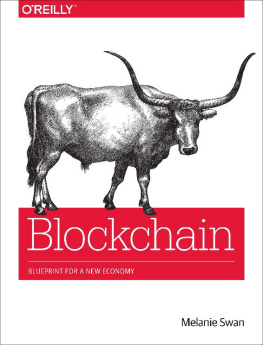Foreword by Caitlin Long
Founder & CEO of Custodia Bank
Satoshi Nakamoto, the inventor of Bitcoin, is one of the most important systemic thinkers in human history.
A systemic thinker is a polymathan expert who works across disciplines, spotting connections others may not see by going broad as well as deep. For example, a systemic thinker may see that Michelangelos David has more in common with Dantes Divine Comedy than it does with Berninis David, despite both statues of David studying the same Biblical subject. Why? Dante and Michelangelo were Renaissance creators whose works displayed the humanism, symmetry, order and clean lines of the Renaissance. By contrast, Baroque creators, such as Bernini or Mozart, favored ornate detail over simplicity as well as movement over stability. Systemic thinkers learn to spot such patterns horizontallypatterns that even the greatest experts in each vertical may not be able to see.
Satoshi Nakamoto is a true polymathone of the greatest, if not the greatest, systemic thinker of our time. Satoshis invention, the Bitcoin blockchain, was cross-disciplinary. Satoshi solved a computer science problem long considered unsolvable by computer scientists, by applying knowledge from outside computer science. To create Bitcoin, Satoshi applied elements of economics, psychology and behavioral science to cryptography and distributed systems.
A blockchain is a new type of database technology. Speaking simplistically, a blockchain allows multiple parties to see the same data at the same time and trust that its valid. A blockchain is a golden copy of information upon which all users can rely. It is shared technology infrastructure.
What problem does blockchain technology solve? Expressed in practical terms, on the one hand, blockchain solves the duplication/reconciliation problemwhen parties dont trust each other,they need to keep and reconcile their own copies of data. Expressed in philosophical terms, on the other hand, blockchain solves the trust problem. To establish trust, today we use an army of auditors; accountants; trustees; lawyers; transfer agents; registrars; county clerks; asset custodians; and myriad other forms of third-party validators, and sometimes we throw in a central counterparty to stand in between, and then we duplicate and reconcile the same data across each of these parties. Until blockchain came along, there was no avoiding all thisit was the cost of establishing trust. But its a tremendously inefficient and resource-intensive way to create trust. Blockchain is a database architecture that can streamline these processes massively. Its a cheaper way to create trust.
A true blockchain is decentralized. This means there is no system administrator. There is no gatekeeper. There is no central target for hackers to attack.
Some of you may find the analogy to Google Docs helpful. When students use Google Docs to write a term paper, they share the same document with multiple parties at the same time and can see their colleagues editing it in real-time. But theres a problem. Google controls the data, and you have no way of knowing whether Google tampered with it. A blockchain is like Google Docs but without Googlebecause no party has a controlling role in a true blockchain. No one owns the network because every participant in the network owns it.
Now lets talk about Bitcoin, the first blockchain. Satoshi Nakamoto actually didnt invent anything new in 2008. Rather, Satoshi combined several existing advances in a way no one had combined them before, and the advances cut across disciplinesspanning math (i.e., cryptography), computer science (i.e., distributed systems/peer-to-peer networking) and economics (i.e., game theory). The use of game theory was Satoshis real geniusSatoshi reinforced the technology with asymmetric incentives.
For example, its expensive to add transactions to Bitcoins ledger, but cheap to verify them once theyve been added, thereby making it very easy to enforce property rights within this system. Its prohibitively expensive to attack the Bitcoin networkit would cost billions just to re-write this mornings transaction historybut cheap for individuals to participate in the network by simply downloading the open-source Bitcoin software to become a network node.
But most importantly, unlike every other form of money used in human history, growth in the value of bitcoin doesnt cause more bitcoin to be produced. Growth in the value of gold causes more gold to be mined or growth in the value of the dollar enables the Federal Reserve to print more of them. Rather, growth in bitcoins price ONLY makes the network more secure. There will never be more than 21 million bitcoins, regardless of how high its price goes. As more people join the Bitcoin network, it simply becomes more immune to attack.
And Bitcoin has never been hacked successfully. It is almost certainly the most secure technology system ever built. Wait, you might be thinking, what about the hacks Ive read about? Those hacks happened within insecure applications built on top of the Bitcoin blockchain. The underlying Bitcoin blockchain itselfthe base ledger layerhas NEVER been successfully hacked. And its worth $560 billion on the day of this writing, so theres quite a hackers bounty! Bitcoins success from a cybersecurity standpoint is even more notable when you learn that Bitcoin is not protected by a firewall. It lives in the wilds of the Internet and hackers constantly try but fail to penetrate it. Why? Remember, Bitcoin works because its a beautiful balance of technology and economic incentiveshackers would spend a lot more money to hack it than they would gain from doing so.
It took a systemic thinkerwith top-notch skills in cryptography and computer science and a keen understanding of game theory, monetary history and human behaviorto concoct such a beautifully-balanced system. And in doing so, Satoshi solved a problem that the computer science field had tried to solve for decades, called the Byzantine Generals Problem. Put simply, how would generals fighting on a Byzantine battlefield know that messages they received from other generals during battle werent tampered with during their journey across the battlefield? This was considered by many to be an unsolvable problem in the computer science specialty of distributed systems, but Satoshi solved it. Perhaps if computer scientists had spent more time talking to economists and behavioral scientists all along, it might have been solved a lot sooner!
















